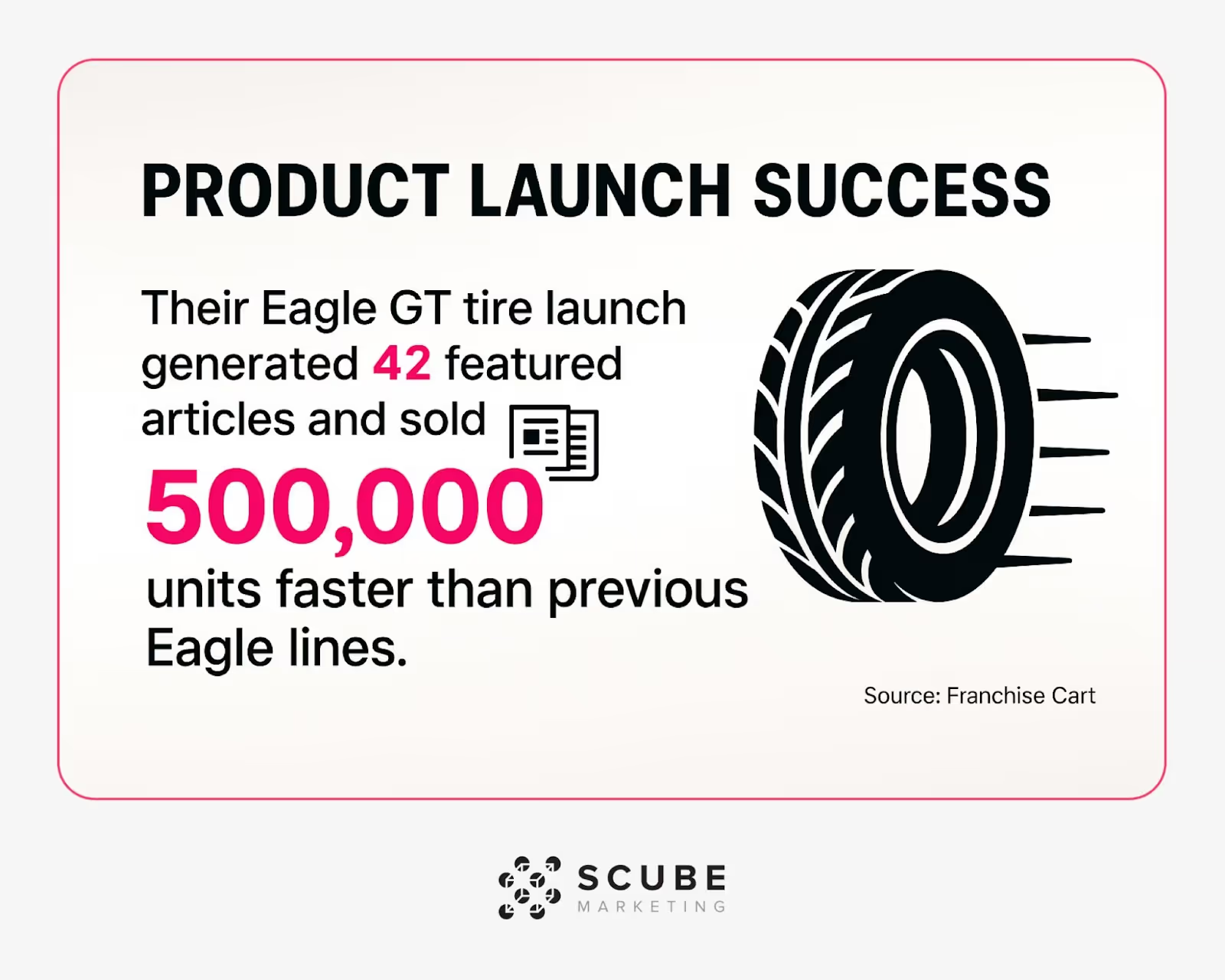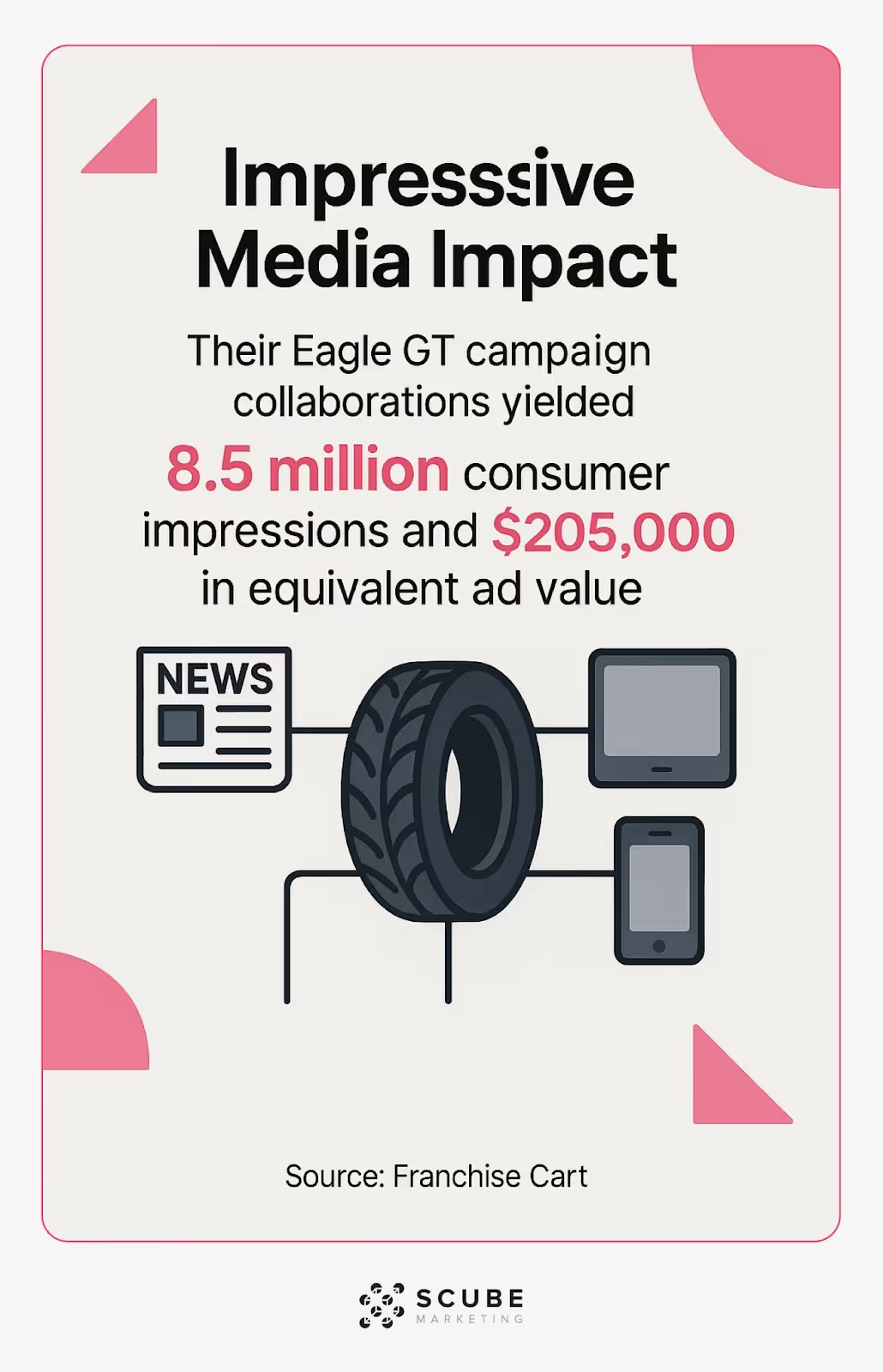
Tire giant Goodyear isn't just rolling along in the automotive world—they're crushing it with marketing strategies that aftermarket businesses can learn from. As someone who works with automotive parts retailers to optimize their marketing efforts every day, I'm always studying success stories for actionable insights. Goodyear's transformation from a traditional manufacturer to a marketing powerhouse offers valuable lessons for any aftermarket business looking to grow.
What makes their approach so relevant for parts retailers and service providers? Their focus on brand consistency, strategic franchise development, and data-driven decision making creates a blueprint that can work for businesses of any size. In this post, I'll break down Goodyear's marketing success and show you exactly how aftermarket businesses can apply these strategies to their own operations.
Goodyear stands out by balancing traditional brand strength with modern marketing innovation. They've consistently evolved their approach to address changing consumer behaviors without abandoning what made them successful in the first place.
What's particularly relevant for aftermarket businesses is their focus on building long-term customer relationships. They understand that selling automotive products isn't just about the immediate transaction—it's about creating lifetime customer value through consistent quality and service.
Their marketing approach centers around several fundamental principles:
These principles form the foundation of their success and provide a framework that aftermarket businesses can adapt to their specific markets. The beauty of this approach is its scalability—the same principles work whether you operate a single location or a regional chain.

One of Goodyear's most impressive achievements has been their franchise expansion. They transformed 40 unaffiliated outlets into more than 130 franchised Goodyear Autocare locations within just five years. (Source: Traffic)
This growth didn't happen by accident. It resulted from a deliberate strategy to standardize brand experience while allowing for local market adaptations. For aftermarket businesses looking to expand, this balanced approach offers a valuable roadmap.
Let's examine the key metrics from Goodyear's franchise growth to understand what made it so successful:
The table highlights how Goodyear's approach created significant improvements across multiple dimensions. Their franchise model success can be attributed to a focus on professionalism and lifetime customer value, which proved highly effective even as they expanded rapidly.
For aftermarket businesses, successful growth strategies often depend on maintaining quality while scaling operations. The lesson here isn't necessarily to franchise, but to create systems and standards that ensure consistency as you grow.

Goodyear's approach to product launches demonstrates their mastery of market positioning. Their Eagle GT tire launch generated 42 featured articles and sold 500,000 units faster than previous Eagle lines. (Source: Franchise Cart)
This success wasn't just about product quality—it was about how they positioned it in the market. Rather than focusing solely on technical specifications, they created a narrative around performance and lifestyle that resonated with their target audience.
Let's look at how Goodyear's growth tactics can be applied specifically to aftermarket businesses:
This comparison shows how the principles Goodyear uses can be adapted to different types of aftermarket businesses. The key is finding the right balance between standardization and customization for your specific market.
For parts retailers specifically, what's the most effective way to position automotive products online? Goodyear's approach suggests moving beyond technical specifications to tell a story about how the product enhances the customer's vehicle experience.

Goodyear's strategic collaborations demonstrate the power of targeted media partnerships. Their Eagle GT campaign collaborations yielded 8.5 million consumer impressions and $205,000 in equivalent ad value. (Source: Franchise Cart)
This approach of targeted outreach rather than broad, generic advertising allowed them to reach highly qualified potential customers at a fraction of the cost of traditional mass media. For aftermarket businesses with limited marketing budgets, this targeted approach offers a practical alternative to costly mass-market advertising.
The benefits of strategic partnerships in the automotive aftermarket include:
When developing your own media partnerships, consider looking beyond traditional automotive publications to where aftermarket consumers actually spend their time online and offline. This data-driven approach to partnership selection can significantly improve your marketing efficiency.
While traditional marketing remains important, Goodyear has embraced digital channels to reach customers where they spend increasing amounts of time. Their approach integrates online and offline experiences to create a seamless customer journey.
Let's compare traditional automotive marketing approaches with Goodyear's innovative methods:
For aftermarket businesses, this comparison highlights the importance of evolving beyond traditional marketing tactics. While trade shows and print advertising still have their place, digital channels offer more precise targeting and measurable results.
According to Goodyear's annual report, they've prioritized digital transformation across all aspects of their business, including marketing and customer engagement. (Source: Goodyear Annual Report 2023)
I've noticed that aftermarket businesses that integrate their inventory management systems with their marketing platforms can create particularly effective digital campaigns. This integration allows for real-time promotion of specific products based on inventory levels and profit margins.
One of the most valuable lessons from Goodyear's approach is their commitment to data-driven decision making. Rather than relying on assumptions or tradition, they systematically gather and analyze information to guide their marketing strategies.

The previous year's annual report highlights how Goodyear integrates consumer insights and market data into product development and marketing campaigns. (Source: Goodyear Annual Report 2022)
For aftermarket businesses looking to implement data-driven marketing, consider these steps:
The power of this approach comes from making smaller, more frequent adjustments rather than major shifts only when problems become obvious. This incremental improvement process compounds over time.
Let's look at a practical implementation roadmap for aftermarket businesses:
This phased approach makes the process manageable even for smaller aftermarket businesses with limited resources. The key is starting with your most valuable data sources rather than trying to track everything at once.
Now that we've examined Goodyear's approach, let's focus on practical applications for automotive aftermarket businesses. How can you implement these strategies without Goodyear's budget or resources?
The franchise model that Goodyear has used successfully offers valuable insights even for independent aftermarket businesses. Their approach to professional presentation and standardized experience can be applied to individual locations. (Source: Goodyear Autocare)
Start by assessing your current marketing approach against Goodyear's principles. Where are the gaps? Which areas present the most immediate opportunities for improvement? This assessment helps prioritize your efforts for maximum impact.
For most aftermarket businesses I work with, the biggest opportunities typically come from:
The key is to begin with one area rather than trying to transform everything simultaneously. Select the opportunity that offers the best combination of impact and feasibility for your specific situation.
Many aftermarket businesses overlook the importance of email marketing for building ongoing relationships with customers. Goodyear's focus on lifetime customer value suggests this channel deserves more attention in your marketing mix.

Goodyear's marketing success offers a valuable blueprint for automotive aftermarket businesses looking to grow in a competitive market. Their strategic approach to brand consolidation, product positioning, media partnerships, and data-driven marketing demonstrates principles that work for businesses of any size.

The key takeaway is that effective marketing isn't about having the largest budget—it's about making smart, strategic decisions based on your specific market position and customer needs. This focused approach is often more effective than trying to compete with larger companies on their terms.
By implementing even a few of Goodyear's approaches, aftermarket businesses can improve their market position and build stronger customer relationships. Start with a clear assessment of your current marketing, identify the most promising opportunities for improvement, and take consistent action.
Remember that Goodyear's success didn't happen overnight. Their transformation was the result of consistent application of sound principles over time. The same approach will serve your aftermarket business well.